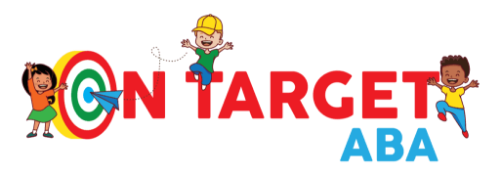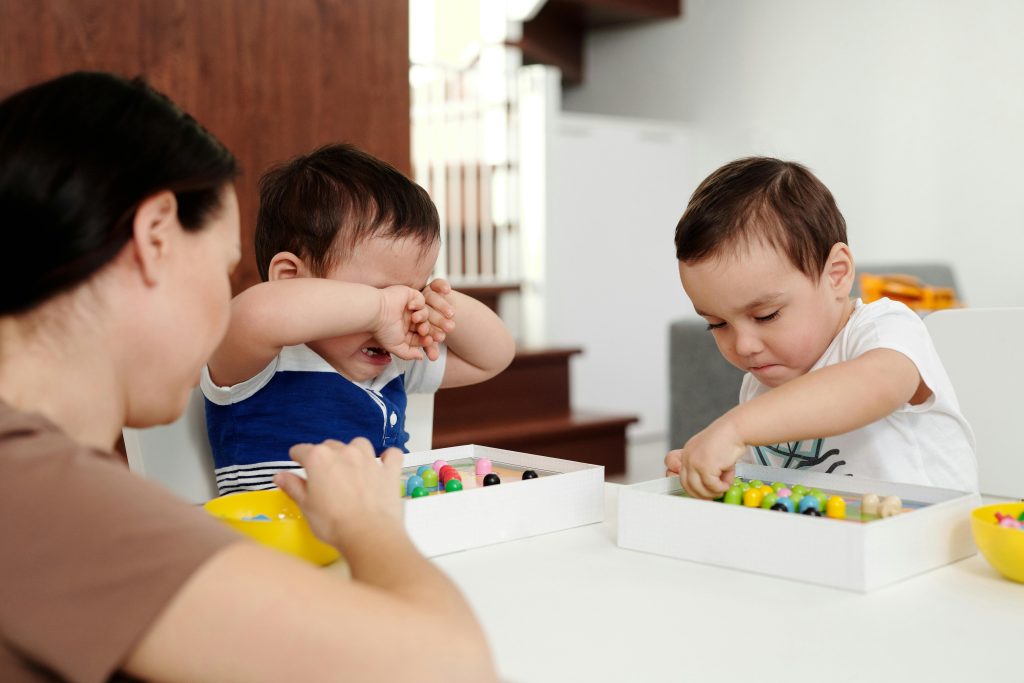🧠 AI Summary:
This blog dives into how Applied Behavior Analysis (ABA) therapy helps children with autism develop communication — from nonverbal gestures and picture cards to spoken language and conversation skills. Parents will learn how therapists at On Target ABA use evidence-based strategies like reinforcement, modeling, and play to build confidence and connection. The article also offers insights into how families can support communication growth at home, helping every child find their voice.
Introduction: Every Voice Deserves to Be Heard
Communication is the bridge between a child’s world and the people who love them. For many children with autism, expressing needs, thoughts, or feelings doesn’t come easily — but with the right support, it can become natural and empowering.
At On Target ABA, we believe that every child has a voice. Through structured teaching, play-based learning, and compassionate support, our therapists help children communicate in ways that fit their unique abilities — whether that’s through gestures, signs, pictures, or spoken words.
This blog explores how ABA therapy builds communication skills step by step, helping children connect, share, and thrive.
Understanding Communication in ABA Therapy
In ABA, communication isn’t limited to talking — it’s any behavior that conveys meaning.
That can include:
- Reaching for a toy
- Pointing to a snack
- Using a picture card to request something
- Signing “more” or “help”
- Saying “I want juice”
Each of these moments is communication — and each is worth celebrating.
ABA therapy helps children move from simple communication forms (like gestures) to more complex ones (like sentences or conversations), using systematic teaching and reinforcement.
The Building Blocks of Communication
1. Manding (Requesting Needs and Wants)
This is often the first step in ABA communication programs. Children learn that when they use a word, gesture, or symbol, they get what they want — building motivation to communicate.
Example: A child points to a ball → therapist says “Ball!” and hands it to them → child learns that communication works.
2. Tacting (Labeling the World)
Once requesting is established, children learn to label items around them — people, objects, actions, and emotions.
This expands vocabulary and helps them describe their environment.
Example: Child says “dog” when seeing a pet → therapist praises with “Yes! That’s a dog!”
3. Echoics (Imitation)
Imitation strengthens speech development. Therapists model words and phrases, and children practice repeating them — a key bridge to spontaneous speech.
4. Intraverbals (Conversational Skills)
At higher levels, children learn back-and-forth communication — answering questions, telling stories, or expressing opinions.
Each stage builds upon the last, ensuring steady progress toward natural communication.
Tools Used in ABA to Build Communication
At On Target ABA, therapists use a variety of evidence-based tools tailored to each child’s learning style:
- Visual Supports: Picture cards, communication boards, and visual schedules.
- Sign Language or Gestures: Early methods for children who are nonverbal.
- PECS (Picture Exchange Communication System): Encourages children to exchange images to express needs.
- Speech-Generating Devices: Tablets or voice-output systems for digital communication.
- Natural Environment Teaching (NET): Practicing communication during play, meals, and social time.
Each tool builds confidence — empowering children to share their needs in whatever way works best for them.
Reinforcement: The Key to Communication Growth
Positive reinforcement is at the heart of ABA. When communication is rewarded, it’s more likely to happen again.
If a child points to juice and receives it right away, they learn that communication leads to success. Over time, therapists shape that same gesture into a word or phrase like “juice please.”
At On Target ABA, every communication attempt is acknowledged, encouraged, and celebrated — because progress comes in many forms.
The Role of Play in Teaching Communication
Play creates the perfect environment for spontaneous, joyful learning. During playtime, therapists model words, encourage turn-taking, and naturally prompt communication.
Examples include:
- Sensory play: Asking for “more bubbles” or “blue slime.”
- Pretend play: Using role play to practice greetings and emotions.
- Games: Encouraging requests (“my turn!”) and sharing (“your turn!”).
💙 Play turns therapy into connection — and connection builds language faster than drills alone.
How Parents Can Support Communication at Home
Communication grows strongest when therapy and home life align. Parents play a vital role in reinforcing ABA strategies.
Tips for Home Practice:
- Model simple language. Narrate daily tasks (“We’re washing hands,” “Time to eat”).
- Offer choices. Encourage your child to make requests (“Do you want apples or crackers?”).
- Pause and wait. Give your child time to respond before prompting.
- Celebrate small wins. Every sound, gesture, or attempt deserves encouragement.
The goal isn’t perfection — it’s progress. Every interaction is a learning moment.
Common Challenges and How ABA Helps
Some children may resist communication at first — especially if previous attempts weren’t understood or rewarded. ABA addresses this gently through:
- Pairing: Building positive associations with therapists and learning.
- Motivating operations: Using favorite toys or snacks to spark engagement.
- Prompt fading: Gradually reducing help as independence grows.
By meeting children where they are, ABA ensures that learning feels safe and rewarding.
💙 The On Target ABA Approach
At On Target ABA, communication isn’t just a therapy goal — it’s the heart of everything we do.
Our centers across Ohio and Utah provide individualized programs designed to help every child:
- Build functional language
- Strengthen social interaction
- Express emotions appropriately
- Develop confidence in communication
Through collaboration, parent training, and compassionate support, we help families experience the joy of hearing their child’s voice — however it sounds.
Conclusion: Every Word Is a Milestone
Communication is more than speech — it’s connection, understanding, and belonging. With the support of ABA therapy, children learn to express themselves in ways that bring their world closer.
At On Target ABA, we celebrate every sound, sign, and smile as a step forward — because finding your voice means finding your freedom. 💙

